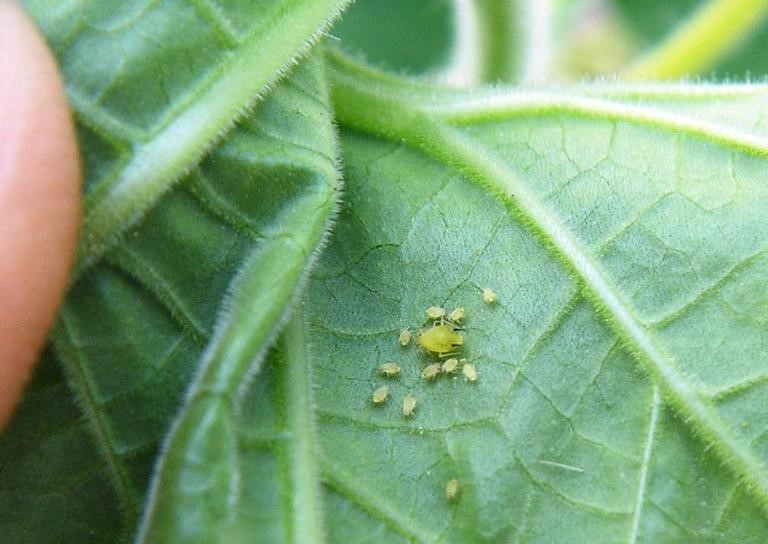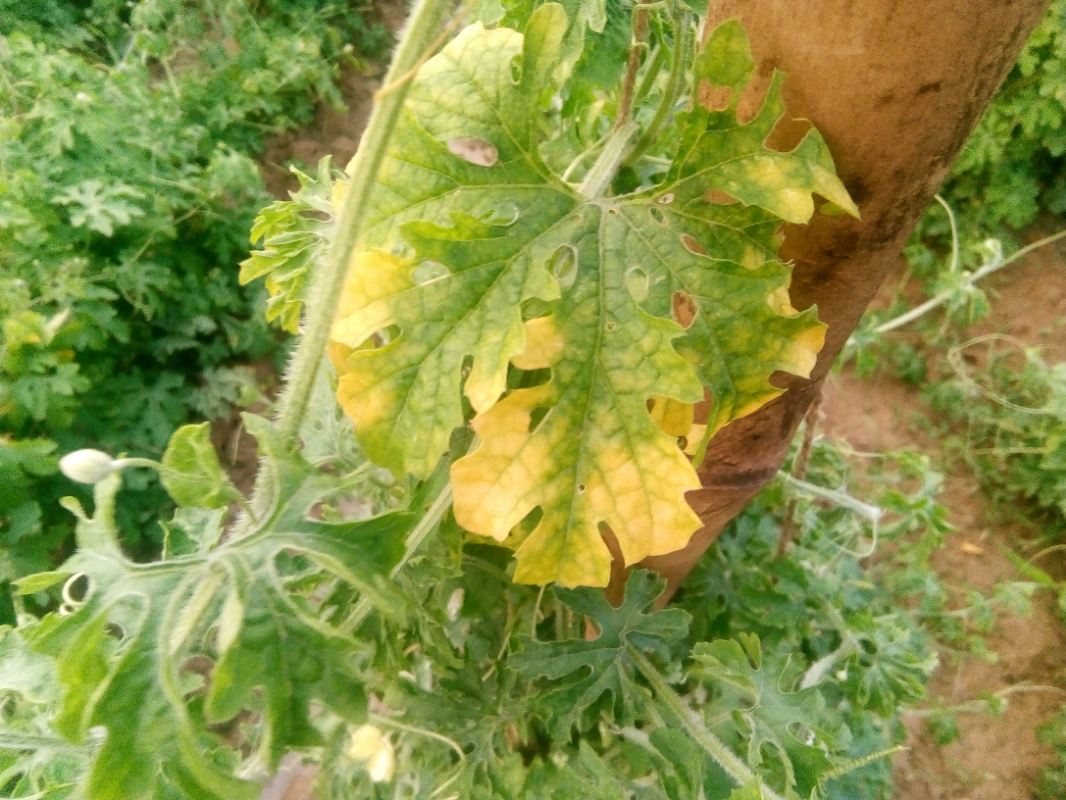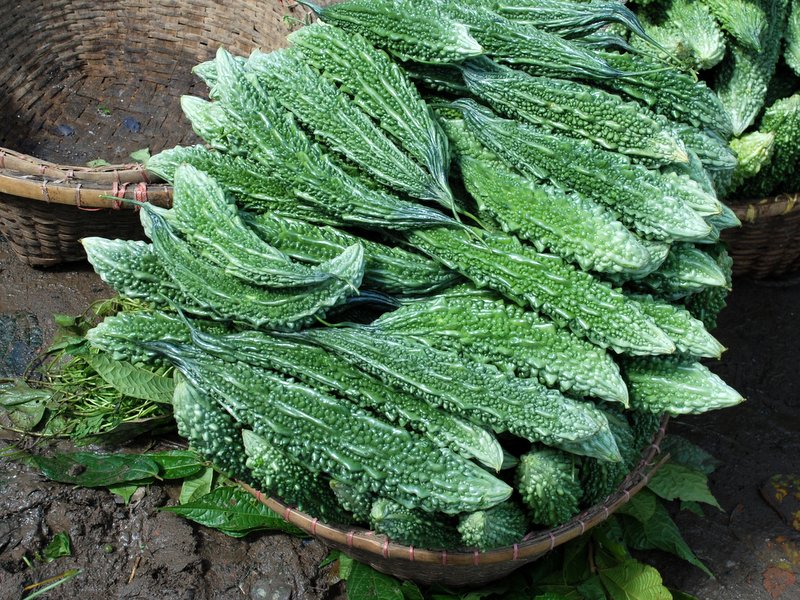Profitable Business of Bitter Gourd Cultivation in India, Varieties, Pest & Disease Management
Introduction:
Bitter gourd, also known as bitter melon or Momordica charantia, is a tropical and subtropical vine belonging to the gourd family, Cucurbitaceae. It is widely cultivated for its edible fruit, which is known for its extremely bitter taste. Bitter gourd is popular in many Asian cuisines and is valued not only for its distinctive flavour but also for its potential health benefits.
The fruit of the bitter gourd is oblong or oval in shape, with a rough, bumpy skin that ranges in colour from green to yellow-orange when ripe. The flesh inside is crunchy and watery, with a taste that is intensely bitter. Despite its bitterness, bitter gourd is used in various dishes, such as curries, stir-fries, and soups, often paired with other strong Flavors to balance out its taste. Bitter gourd is believed to have several health benefits, primarily due to its rich nutritional content and various bioactive compounds. It is a good source of vitamins (especially vitamin C), minerals (such as iron, magnesium, and potassium), and dietary fibre. Additionally, bitter gourd contains compounds like charantin, momordicin, and vicine, which have been studied for their potential to help regulate blood sugar levels and improve insulin sensitivity, making it of interest to individuals with diabetes.
It’s important to note that the bitterness of bitter gourd can be an acquired taste, and not everyone enjoys it. Some people appreciate its unique flavour and potential health benefits, while others find its bitterness challenging to tolerate. If you’re considering trying bitter gourd, it’s a good idea to explore various cooking methods and recipes to find a preparation that suits your taste preferences.
Bitter gourd, also known as bitter melon or karela, is a popular vegetable cultivated in India due to its nutritional and medicinal properties. It’s commonly used in various culinary dishes and traditional medicine.
Here are methods of bitter gourd cultivation in India:
1. Climate and Soil:
Bitter gourd thrives in warm and humid tropical climates. It requires temperatures between 24-30°C (75-86°F) for optimal growth. It’s sensitive to frost and grows best in well-draining, sandy-loam to clay-loam soils with a pH range of 6.0-6.7.
2. Varieties:
India has a rich diversity of bitter gourd varieties, each with its own unique characteristics and uses. Here are some popular Indian varieties of bitter gourd:
-
Indian Landrace (Local Varieties):
These are traditional and locally adapted varieties of bitter gourd that have been cultivated for generations. They often have a distinct regional preference and are well-suited to specific climates and soil conditions.
-
Arka Harit:
Developed by the Indian Institute of Horticultural Research (IIHR), Arka Harit is a high-yielding bitter gourd variety known for its smooth, green skin and moderate bitterness. It’s popular among farmers due to its resistance to certain pests and diseases.
-
Pusa Do Mausami:
Developed by the Indian Agricultural Research Institute (IARI), Pusa Do Mausami is a hybrid variety with a relatively uniform fruit size and shape. It’s known for its dark green color, tender fruit, and moderate bitterness.
-
Pusa Naveen:
Another hybrid developed by IARI, Pusa Naveen is favored for its uniformity, smooth skin, and good keeping quality. The fruit is long, cylindrical, and has a relatively mild bitterness.
-
COBH-1 (Coimbatore Bitter Gourd Hybrid-1):
Developed by the Tamil Nadu Agricultural University, this hybrid variety is known for its high yield potential and good resistance to pests and diseases. It produces uniform, dark green fruits with moderate bitterness.
-
CO-1 (Coimbatore-1):
This is a well-known traditional variety from Coimbatore, Tamil Nadu. It has a distinctive oblong shape and is known for its strong bitterness. It’s used in various regional dishes.
-
Priya:
Priya is a popular hybrid bitter gourd variety known for its high yield potential, uniform fruit size, and resistance to diseases. The fruits are relatively slender and dark green.
-
MDU-1 (Madurai Bitter Gourd-1):
Developed by the Agricultural College and Research Institute, Tamil Nadu, this variety is known for its high yield and dark green, glossy fruits. It has moderate bitterness.
-
Swarna:
Swarna is a hybrid variety with elongated, slender fruits. It is often used in traditional Indian cooking and is known for its moderate bitterness.
-
Preethi:
Preethi is a hybrid variety with long, cylindrical fruits. It is valued for its relatively mild bitterness and uniform fruit size.
-
Narendra Karela:
This variety is known for its resistance to pests and diseases. The fruits are dark green and slightly ridged.
3. Propagation:
Bitter gourd is primarily propagated through seeds. Seeds can be directly sown in the field or started in nursery beds and transplanted later. Transplanting allows for better control of plant spacing and growth.
4. Sowing and Transplanting Season of Bitter Gourd:
Seeds can be sown in nursery beds or seed trays about 4-6 weeks before the last frost. Transplanting should be done when seedlings have 3-4 true leaves. Space the plants about 1-2 meters apart in rows with proper trellising support.
Here are guidelines for sowing and transplanting bitter gourd in different parts of India:
-
North India:
In North India, bitter gourd is usually sown and transplanted from late February to early March, depending on the local climate. This allows the plants to establish themselves before the hotter months arrive. Transplanting can occur in late March to early April. Bitter gourd requires warm temperatures for optimal growth.
-
South India:
In South India, where the climate is relatively milder and warmer throughout the year, bitter gourd can be sown and transplanted from late January to early February. Transplanting can take place in late February to early March.
-
East India:
East India has a climate similar to North India. Bitter gourd can be sown and transplanted around the same time as in North India, from late February to early March. Transplanting can occur in late March to early April.
-
West India:
In West India, bitter gourd can also be sown and transplanted around the same time as in North India, from late February to early March. Transplanting can take place in late March to early April.
6. Trellising:
Bitter gourd is a vine-type plant, and providing vertical support helps in better fruit development, disease management, and easy harvesting. Bamboo or wooden stakes can be used for trellising.
7. Fertilization & Manuring:
The quantity of fertilizers and manure required for bitter gourd cultivation can vary based on factors such as soil fertility, nutrient content, and local growing conditions. It’s important to conduct a soil test before applying fertilizers to determine the specific nutrient requirements of your soil. However, here are some general guidelines for fertilization and manure application for bitter gourd cultivation:
-
Organic Manure:
Before planting, incorporate well-rotted organic manure into the soil. This can include compost, well-rotted cow dung, or any other locally available organic material. Apply about 10-15 tons of organic manure per hectare (4-6 tons per acre). Mix the organic matter thoroughly into the soil to improve soil structure and fertility.
-
Nitrogen (N):
Bitter gourd plants require nitrogen for healthy foliage growth and fruit development. The nitrogen requirement can vary, but as a general guideline, you can apply about 50-60 kg of nitrogen per hectare (20-24 kg per acre) in multiple split doses during the growing season.
-
Phosphorus (P) and Potassium (K):
Phosphorus and potassium are important for root development, flower formation, and overall plant health. Apply about 40-50 kg of phosphorus and 40-50 kg of potassium per hectare (16-20 kg each per acre) before planting or during the early stages of growth.
-
Micronutrients:
Bitter gourd plants also benefit from micronutrients like zinc, iron, manganese, and copper. These are often included in balanced fertilizers or can be applied separately based on soil test recommendations.
-
Fertilizer Application Schedule:
Divide the total fertilizer quantity into multiple applications to ensure steady nutrient availability throughout the growing season. Apply a portion of the nitrogen, phosphorus, and potassium before planting or during transplanting, and then apply the remaining amounts in 2-3 subsequent doses during the vegetative growth and fruiting stages.
-
Foliar Feeding:
Foliar application of micronutrients can be beneficial, especially if there are signs of nutrient deficiencies. A balanced micronutrient spray can be applied as needed.
-
Soil pH Adjustment:
Ensure that the soil pH is within the optimal range of 6.0-6.7 for bitter gourd cultivation. If the pH is too high or too low, nutrient availability can be affected. Lime or sulfur can be added to adjust the pH as needed.
8. Pest and Disease Management:
Controlling pests and diseases in bitter gourd cultivation often requires a combination of cultural practices, biological controls, and, when necessary, the use of chemical pesticides. Here are some common pests and diseases of bitter gourd and the chemicals used for their control:
Pests:
- Fruit Flies: Fruit flies are a major pest of bitter gourd, causing damage to fruits. They can be controlled using chemicals like neonicotinoids (e.g., imidacloprid) or pyrethroids (e.g., deltamethrin).
- Aphids: Aphids are small insects that suck sap from plant tissues, causing distortion and stunting. Insecticidal soaps, neem oil, or pyrethroids can be used for aphid control.

Fig: Aphid on leaf of Bitter Gourd
- Whiteflies: Whiteflies are small insects that feed on plant sap and can transmit viruses. Neonicotinoids, pyrethroids, or insecticidal soaps are commonly used to manage whiteflies.
- Spider Mites: Spider mites are tiny pests that feed on plant sap and cause stippling on leaves. Miticides like abamectin or horticultural oils can help control spider mite infestations.
Diseases:
- Powdery Mildew: Powdery mildew appears as a white, powdery coating on leaves. Fungicides containing sulfur, potassium bicarbonate, or azoxystrobin can be used to control powdery mildew.
- Downy Mildew: Downy mildew causes yellow spots on the upper surface of leaves and a downy growth on the underside. Fungicides like metalaxyl or mancozeb can be used for control.

Fig: Effect of Downy Mildew Disease in Bitter Gourd
- Anthracnose: Anthracnose leads to dark lesions on leaves, stems, and fruits. Copper-based fungicides can help manage anthracnose.
- Fusarium Wilt: Fusarium wilt causes wilting, yellowing, and eventual death of the plant. Soil drenching with fungicides like carbendazim can be used for control.
- Bacterial Wilt: Bacterial wilt results in wilting, yellowing, and bacterial ooze from cut stems. There are no effective chemical treatments for bacterial wilt. Practices like crop rotation and using disease-free seeds are important for prevention.
9. Harvesting:
Bitter gourd fruits are typically harvested when they are still green and tender. Overripe fruits tend to become excessively bitter and lose their culinary appeal. Regular harvesting encourages continuous fruit production.

Fig: Harvesting of Bitter Gourd
10. Post-Harvest Handling:
After harvesting, bitter gourds should be handled carefully to avoid bruising or damage. They can be stored in a cool, well-ventilated area or in the refrigerator for a few days.
Bitter gourd cultivation practices can vary based on the region, climate, and specific variety being grown. It’s important to stay updated with local agricultural extension services or experts for the most relevant and up-to-date cultivation guidelines.
11. Conclusion:
Bitter gourd cultivation in India is a significant agricultural practice that combines tradition, nutrition, and medicinal value. With its distinct bitter taste, bitter gourd has long been a staple in Indian cuisine and traditional medicine. The cultivation process involves careful consideration of factors such as climate, soil, varieties, and pest management. India’s diverse climate zones provide suitable conditions for bitter gourd cultivation across the country. From the plains of North India to the coastal regions of the South, farmers adapt their practices to match local climates. The choice of varieties, including traditional landraces and modern hybrids, allows farmers to select plants that thrive in their specific microenvironments.
Cultivating bitter gourd demands attention to detail throughout its growth cycle. The sowing and transplanting times are critical, influenced by the onset of warm temperatures. Trellising systems are employed to support the vigorous vine growth and ensure healthy fruit development. Proper fertilization, incorporating organic manure and balanced nutrients, contributes to robust plants and yields. While bitter gourd is a hardy crop, it faces challenges from pests and diseases. Integrated pest management strategies are employed to minimize chemical intervention and promote sustainability. Farmers employ a combination of cultural practices, biological controls, and targeted pesticide use to safeguard their crops.
The outcome of bitter gourd cultivation is not just nutritional sustenance but also the continuation of cultural practices that have been passed down through generations. Bitter gourd dishes are an integral part of Indian cuisine, offering unique flavors and contributing to the country’s rich culinary heritage. Moreover, the bitter gourd’s medicinal properties, including its role in managing diabetes and improving digestion, underscore its value beyond the dinner table.






